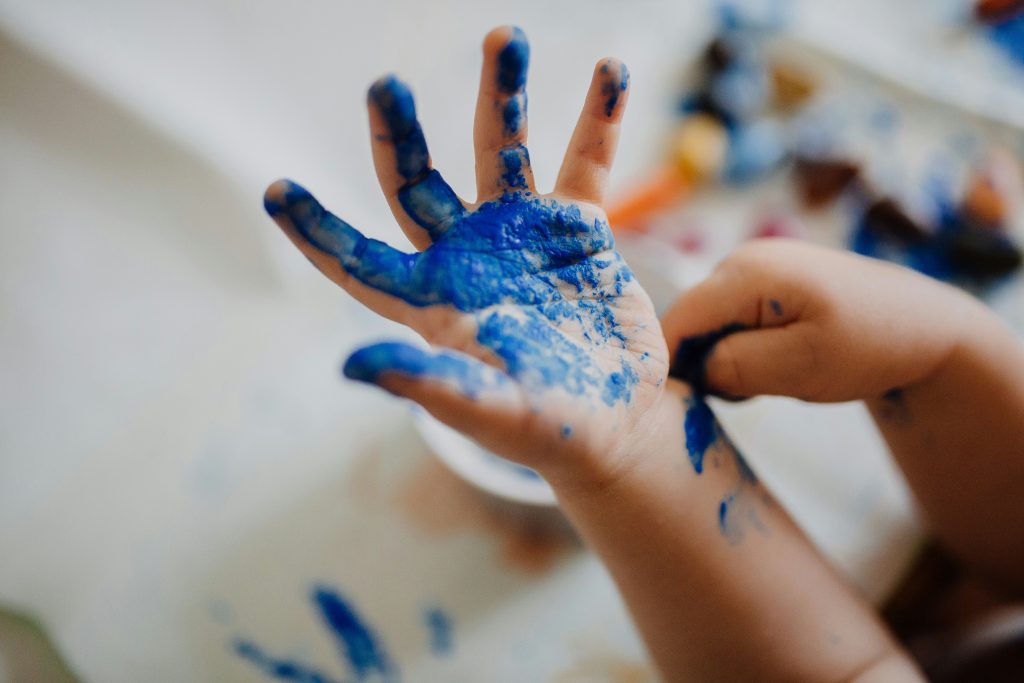Visual perception is the primary way to gain experience and express creativity in the visual domain. However, auditory factors can also play a significant role in enhancing a creativity of children’s drawing.
Poetry and stories influence on children’s drawing
The poetic word in the verses of poets, in stories and fairy tales, is an integral part of aesthetic experiences. It is also incentives for artistic creativity. Adults often recite, tell, or read these stories to children, and they use various visual means to illustrate them. Children, in turn, freely express what has made the strongest impression on them. For example, children’s drawing of riddles and proverbs are fascinating. They showcase creativity, originality in thinking, and personal understanding of concepts, things, and relationships.

Music as creative incent
Music can inspire and provide a huge incentive for artistic creation. It can be played while observing art that matches its character, or the music can be accompanied by a story to enhance the experience. Music can even tell a story that children can represent through drawing. For instance, a lively tune indicates the use of brighter and more vivid colors, whereas a somber one calls for darker shades. Children can create their own visual cues for specific sounds, such as a guitar or a siren.
Research has shown that preschool children who listen to music while drawing produce more symbolic artistic creations. This comes as result of exposure to music during drawing process and increases their need to clearly communicate their experiences towards musical content. Children without musical stimulant tend to have a lower level of creativity and emotion compared to their intellectual level. This can lead to routine behavior and a tendency to repeat what has been learned, resulting in uncreative solutions. Easily explained, music will help that children’s drawing leave comfort zone.
Conversation enhance creativity
Engaging in conversations with parents and kindergarten teachers is crucial for shaping children’s drawing creativity. These dialogues provide a platform for children to express their thoughts, ideas, and emotions. Open discussions help children gain valuable insights, learn new perspectives, and develop a richer understanding of the world around them. This exchange of ideas not only stimulates their imagination but also encourages the exploration of diverse concepts, ultimately influencing the creativity reflected in their drawings.
Moreover, the supportive and encouraging nature of conversations with parents and teachers can boost a child’s confidence in their artistic abilities. During interactions with children, positive feedback and constructive criticism can serve as motivational tools. This can inspire children to experiment with different techniques, styles, and themes in their artwork. Parents and teachers can contribute significantly to the development of children’s drawing creativity by nurturing a supportive environment through meaningful conversations. This lays the foundation for a lifelong appreciation of artistic expression.
Mild Intellectual Disabilities vs Drawing creativity
The research data in this area is interesting. It aimed to determine the difference in creative abilities of children with mild intellectual disorders before and after receiving verbal and auditory stimuli during creation of art drawing.
The authors used the aria ‘Flower Duet’ from the opera ‘Lakme’ (by Leo Delibes) as motivation for children with mild intellectual disabilities. This is because such children respond positively to music that stimulates them emotionally, socially, and creatively. The composition evokes many characteristics of flowers, such as colors, textures, contrasts, and sizes, using different tones and instruments. To encourage their motivation, they are asked to listen to music and think about colorful flowers in meadows, including their arrangement, shapes, and sizes. This will help them come up with imaginative and original solutions. During the encouragement, the students discussed the symbolic meaning of certain flowers, the occasions for their presentation, and the emotions they express. This can serve as an auditory stimulus for playing with creative imagination. To stimulate children’s curiosity and encourage them to engage with both real and unreal elements, teacher also shared the legend of the Aster flower.
The aster flower has a captivating story rooted in Greek legend. It is named after the Greek word for star and is known for its vibrant hues and delicate petals. The aster’s association with the celestial realm gives it a unique and enchanting quality. Mythology states that asters originated from the tears of the Greek goddess Astraea. She wept as she looked down upon Earth and saw no stars. In her grief, the tears transformed into star-like blooms. These symbolize purity and elegance. This myth adds an extra layer of charm to the aster’s identity. It makes it not only a botanical wonder but also a beautiful embodiment of a timeless legend. The aster continues to share its story of grace and celestial origins, captivating admirers with its enduring beauty as it adorns gardens or forms enchanting bouquets.
Legend of Aster flower
Afterwards the children were instructed to make a drawing of a flower. Comparing the results before and after verbal and auditory stimulant a big difference could be noticed. As result, children’s drawing were very creative and improvement was made in term of color, proportion, shape and spatial arrangement.
This suggests that experience in one area can serve as a basis for creativity in another. Searching in different areas leads to many ideas and unique solutions. Shifting the position of observation and analysis to view problems from different angles also promotes flexible thinking and provides a suitable context for creative activities for children and students.
